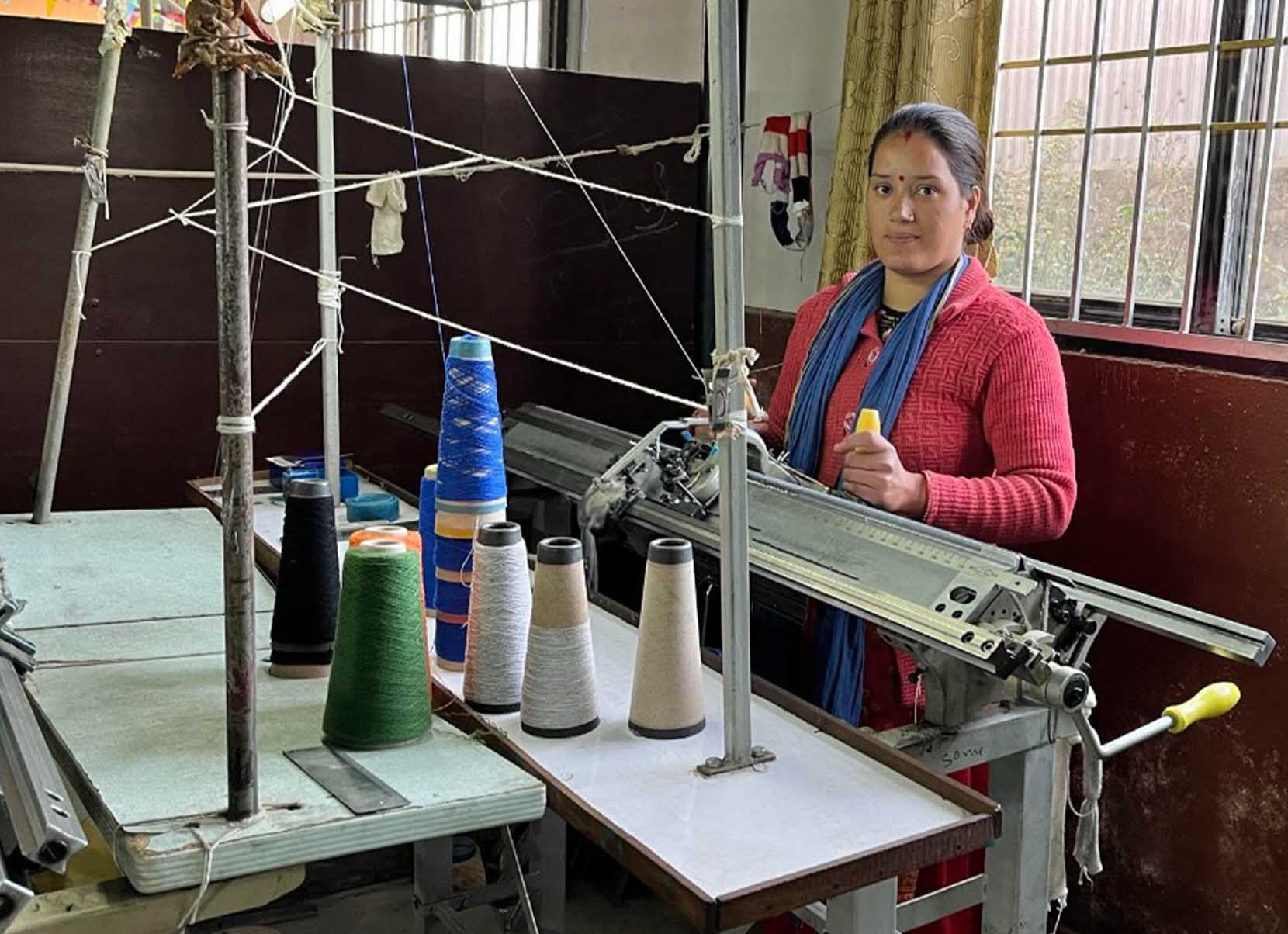A power loom is a mechanized loom, and was one of the key developments in the industrialization of weaving during the early Industrial Revolution. The first power loom was designed in 1786 by Edmund Cartwright and first built that same year. It was refined over the next 47 years until a design by the Howard and Bullough company made the operation completely automatic. This device [...]
Our knitting process is done by automatic knitting machine where Yarn is manipulated to create a fabric. It is used to create many types of garments. Knitting creates stitches : loops of yarn in a row, either flat or in the round (tubular). There are usually many active stitches on the knitting needles at one time. Knitted fabric consists of a number of consecutive rows [...]
A"handloom" is a loom that is used to weave fabrics without the use of electricity. The manipulation of the foot pedals to lift the warp has to be in sync with the throwing of the shuttle which carries the weft yarn. A perfect weave demands coordination between mind and body. Handloom weaving was done by [...]
Hand dyeing is the process of applying dye to a garment by hand. No machines are used; this coloring is accomplished by people power! Plant fiber, animal fiber, natural dyes, manufactured dyes - it doesn't matter. The point of differentiation is that a person - usually an artist - applied the dye. Let’s look deeper at [...]
Hand knitting is a form of knitting, in which the knitted fabric is produced by hand using needles. Flat knitting uses two straight needles to make generally two-dimensional (flat) pieces. Flat knitting is usually used to knit flat pieces like scarves, blankets, and the backs, fronts and arms of sweaters (pullovers). In flat knitting, generally the hand-knitter knits from right-to-left on one side of [...]
Translate »





